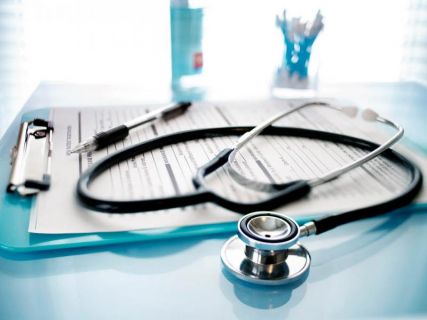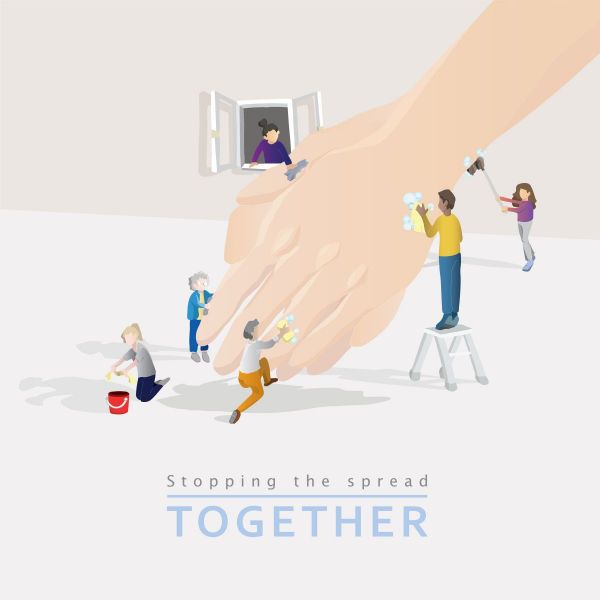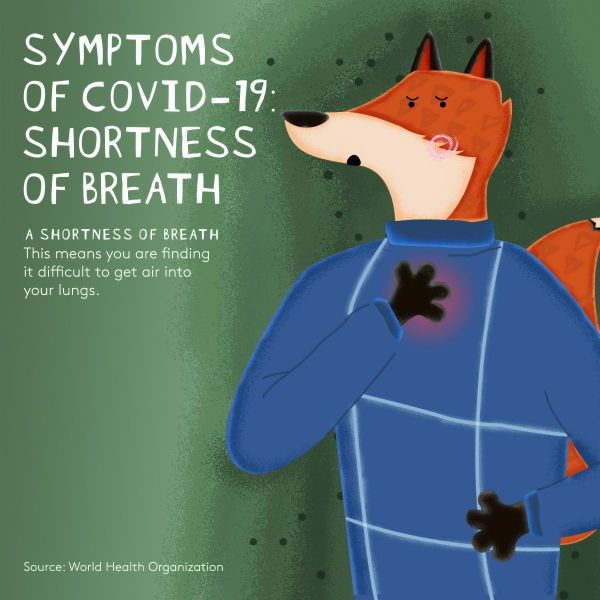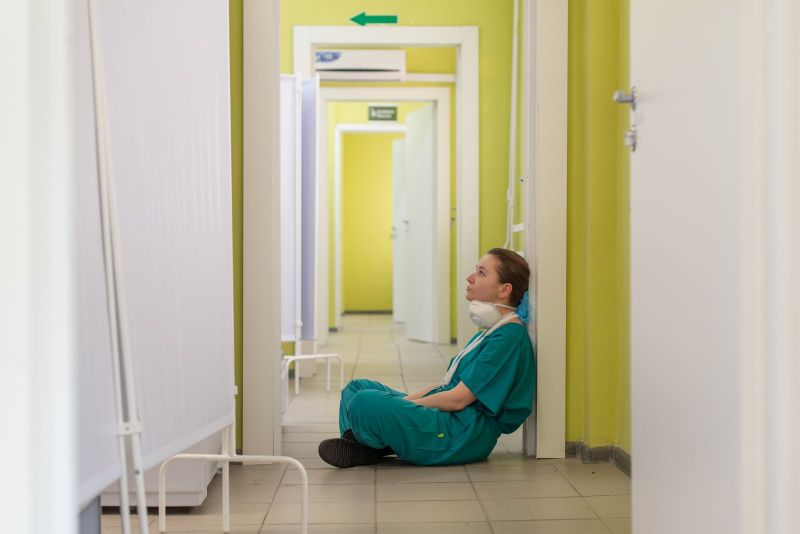Physician Clinical Guidance for COVID-19
Physician Clinical Guidance on COVID-19
Physicians living with a person suspected of having COVID-19, or who have been exposed to a patient or co-worker with COVID-19, have expressed concerns regarding self-quarantine and exclusion from work.
We continue to prioritize testing for symptomatic doctors as well as hospitalized individuals and residents in congregate care settings.
Exclusion of exposed asymptomatic doctors from work for prolonged periods might impact health care system capacity.
Consequently, the health care community must balance workforce challenges with the need to prevent further spread of the virus that causes COVID-19 in health care settings.

Diagnostic Testing of Physicians for COVID-19
If you get fever and/or respiratory symptoms that are concerning for COVID-19 you remain a priority for testing.
Because of the potential implications for COVID-19 spread and severe disease, testing is strongly encouraged for, but not limited to, those working in long-term care or with immunocompromised individuals, and those who worked while ill.
Physician Exposure to COVID-19
Health care organizations are cooperating to identify, manage, and monitor Physicians who have had unprotected (high-risk) exposure to a patient or co-worker with confirmed COVID-19.
Physicians with these exposures are identified through risk assessment, if all necessary PPE has not been worn or available in a setting with confirmed COVID-19, and through identification of PPE breaches when PPE is routinely and correctly used.
Physicians with these exposures participate in voluntary quarantine for 14 days after the exposure.
However, if the facility is experiencing a staffing shortage that cannot otherwise be resolved, asymptomatic high-risk Physicians may be asked to return to work during the voluntary quarantine period, provided the Physician wears a surgical face mask for source control. High-risk Physicians can choose not to return, with worker protections.
Physicians in voluntary quarantine after an unprotected exposure to a COVID-19 positive person, and Physicians who are in close contact to a household member or intimate partner with confirmed or suspected COVID-19, should follow the recommendations below to keep themselves, patients, and co-workers safe.

Recommendations for Doctors in Contact with Persons Having Confirmed or Suspected COVID-19
These recommendations are relevant for doctors who have had a high-risk workplace exposure to COVID-19 and doctors with household or intimate contacts who have confirmed or suspected COVID-19.
* You are advised to limit interactions with the public as much as possible for 14 days after preventive measures are put into place, adhering to social distancing and working from home, if possible. At this time, this remains the preferred option.
* If these limitations to social interaction are not possible, you should take on a non-direct patient care role (e.g., telemedicine, phone triage), when feasible.
* If it remains necessary for you to continue providing direct patient care during this 14 day period, you should:
* Avoid seeing high-risk patients (e.g., elderly and immunocompromised persons and those with comorbidities).
* Practice diligent hand hygiene and wear a N-95 mask at all times.
* Monitor yourself closely for any new symptoms associated with COVID-19 (i.e., measured or subjective fever, cough, shortness of breath, chills, headache, muscle pain, sore throat, or loss of taste or smell), and measure their temperature daily before going to work.
* Remain at home and notify your supervisor if you develop respiratory symptoms OR have a measured body temperature of ≥100ºF.
* If at work when fever or respiratory symptoms develop, you should immediately notify your supervisor and go home.
* Notify your supervisor of other symptoms (e.g., fever <100ºF, nausea, vomiting, diarrhea, abdominal pain, runny nose, fatigue), as a medical evaluation might be recommended.
* If you live with someone who has symptoms consistent with COVID-19, you should separate yourself from the ill household member within the home as much as possible.
* You might want to consider temporarily moving into alternative accommodation, if available, to maintain distance from the ill household member.
* Given family and caregiver responsibilities, we understand that this may not be feasible for you.
All Physicians are at some risk for exposure to COVID-19 during widespread community transmission, whether in the workplace, at home, or in the community.
Instead of 14-day work exclusion for asymptomatic Physicians who have had a workplace exposure, or who have an ill household member or intimate contact, health care facilities might shift priority to reporting of recognized exposures, regular self-monitoring for fever and respiratory symptoms, or refrain from work when ill.
This approach is relevant for facilities with sufficient PPE to ensure that high-risk exposures are unlikely, have the ability to actively assess PPE breaches after every employee’s shift, and are committed to exclusion of ill staff.
Guidance for Ill Physicians with Confirmed or Suspected COVID-19
As recommended above, if you become ill with respiratory symptoms OR fever (≥100ºF), you should communicate with your supervisor and stay out of work.
If you get this clinical presentation, you are considered to have a suspected or confirmed (with laboratory testing) diagnosis of COVID-19. CDC has provided criteria for return of Physicians with confirmed or suspected COVID-19 to the workplace.

CDC recommends use of the test-based strategy or symptom-based strategy outlined in that guidance, under which doctors can return to work if:
* At least 3 days (72 hours) have passed since recovery, defined as resolution of fever without the use of fever-reducing medications and improvement in respiratory symptoms (e.g., cough, shortness of breath); AND,
* At least 10 days have passed since symptoms first appeared.
* Practice of diligent hand hygiene and wearing a surgical face mask at all times until 14 days after illness onset.
If testing capacities allow, a test-based strategy can be used to determine when a doctor can return to work if:
* Fever has resolved without the use of fever-reducing medications, AND
* Respiratory symptoms (e.g., cough, shortness of breath) have improved, AND
* At least two nasopharyngeal swab specimens collected ≥24 hours apart have negative results using a FDA Emergency Use Authorized molecular assay for COVID-19.
Asymptomatic doctors with laboratory-confirmed COVID-19 should be excluded from work for 10 days following specimen collection.
If these individuals subsequently develop symptoms since your last positive test, your return to work should be guided by the recommendations for confirmed COVID-19, above.
If you were not tested for COVID-19, or had an initial negative COVID-19 test, and have an alternate diagnosis (e.g., tested positive for influenza), criteria for return to work should be based on that diagnosis.
Guidance for Recovered Doctors Who Are Exposed to COVID-19 Positive Patients
If you had a confirmed COVID-19 infection, you should return to work based on one of the approaches recommended above. After returning to work, you are considered to be at the same risk of COVID-19 as other Doctors. In situations of unprotected exposure to a person with confirmed COVID-19,
Facilities should follow the same guidance for doctors as they would for doctors who have had confirmed COVID-19.
After a high-risk exposure, you should self-quarantine for 14 days with active monitoring of symptoms.
It is important that doctors returning to the workplace after COVID-19 infection follow the same recommendations for PPE use, undergo routine screening for signs and symptoms of illness, and participate in review of known PPE breaches.
Many facilities are experiencing significant staffing shortages. It might be necessary for you to continue to work, as long as you remain asymptomatic, wear a N-95 mask for source control, and practice diligent hand hygiene. In this situation, you should also follow the recommendations above, in “Recommendations for Doctors in Contact with Persons Having Confirmed or Suspected COVID-19.”
You can continue to work after experiencing a new exposure to a person with COVID-19.
There is currently insufficient data regarding immunological response and protective immunity after COVID-19 infection.
Because the interval between resolution of illness and development of any protective immunity is also unknown, viral carriage and transmission to others during this period cannot be ruled out.
CDC recognizes that there might be a shortage of doctors in some areas and for some facilities.
And recommends utilizing the options outlined in the CDC guidance “Strategies to Mitigate Health Care Personnel Staffing Shortages.”
Aerosol-Generating Procedures and Patients with Suspected or Confirmed COVID-19
Some procedures performed on patients are more likely to generate higher concentrations of infectious respiratory aerosols than coughing, sneezing, talking, or breathing.
These aerosol-generating procedures (AGPs) may put doctors at an increased risk for exposure to SARS-CoV-2 and infection.
Limited data is available to evaluate which procedures may generate potentially infectious aerosols and pose a risk of transmission to doctors.
This statement is a summary of the evidence surrounding AGPs and the current Centers for Disease Control (CDC) guidance.
Aerosol-Generating Procedures and COVID-19
CDC currently recommend that doctors wear an N-95 respirator or equivalent, eye protection, gown, and gloves when performing an AGP or providing care in the ICU to patients with known or suspected COVID-19.
AGPs should be performed in airborne infection isolation rooms (AIIR), if available.
Per CDC guidance, the following procedures should be considered AGPs, due to the creation of uncontrolled respiratory secretions:
* Open suctioning of airway secretions
* Sputum induction
* Cardiopulmonary resuscitation
* Endotracheal intubation and extubation
* Noninvasive positive pressure ventilation (NIPPV) (e.g., BiPAP, CPAP)
* Bronchoscopy
* Manual ventilation

There is limited data on whether other procedures may generate infectious aerosols and represent a transmission risk. These may include but are not limited to:
* Nebulizer administration
* High-flow oxygen delivery
* Tracheostomy
* Nasal endoscopy or endoscopic sinus surgery
* flexible laryngoscopy
* Transsphenoidal surgeries
* Nasogastric or nasojejunal tube placement
Nebulizers and Infection Transmission Risk
* One study has demonstrated aerosol stability of SARS-CoV- 24 in a laboratory setting, but whether this is applicable to clinical situations outside of laboratory conditions is unknown.
* A 2012 review article on aerosol-generating procedures concluded that there was no significant evidence of transmission risk related to nebulizers, utilizing evidence from the SARS outbreak.
* A 2004 study performing polymerase chain reaction (PCR) air sampling around a patient with SARS undergoing nebulizer treatment found no evidence of virus.
* Current UK guidance on infection prevention for COVID-19 does not list nebulizers as a potential transmission risk, due to the fact that the aerosol generated by the device is derived from the medication fluid within the nebulizer chamber and not the patient.
* Based on these data, nebulizer administration likely represents a lower infection risk than other AGPs, but close- range viral aerosol generation remains a possibility.
Based on this potential risk, CDC recommends the following to minimize risk to doctors:
* If a patient can tolerate it, switch to metered-dose inhalers with a dedicated spacer.
* You should wear a face mask (as well as eye protection, gloves and a gown) during treatment if a respirator is unavailable.
* Close the patient’s door when providing nebulizer treatment.
* Upon set-up of nebulizer, you should maintain a safe distance (6 feet or greater), possibly outside the door.
* Patients do not need to be transferred to a higher level of care solely for the purpose of providing nebulizer treatment.
NIPPV and Infection Transmission Risk
* Based on clinical experience from China and the U.S., high-flow nasal cannula (HFNC) are preferred over NIPPV for patients with hypoxemic respiratory failure from COVID-19.
* This is due to reports of lack of efficacy of NIPPV as a rescue therapy for those with respiratory failure and a higher likelihood in general of progression to intubation.
* If HFNC are not available, a short trial of NIPPV with frequent patient reassessment is reasonable, but you should not delay intubation if the patient is not improving.
* When patients are on NIPPV, you should take the following precautions:
* You should wear a face mask (as well as eye protection, gloves and a gown) during treatment if a respirator is unavailable.
* Close the patient’s door when providing NIPPV treatment.
* Upon set-up of NIPPV, you should maintain a safe distance (6 feet or greater), possibly outside the door, depending on patient’s clinical stability and need for reassessment.

Cardiopulmonary Resuscitation (CPR) in Patients with Known or Suspected COVID-19
The administration of CPR involves performing numerous high-risk aerosol-generating procedures, including chest compressions, positive pressure ventilation, and establishment of an advanced airway.
* You should initiate discussions about advance care directives and goals of care with all patients (or their authorized decision-maker) on arrival to an acute or long-term care facility or with any significant change in clinical status such as an increase in level of care.
* When providing CPR to patients with COVID-19, you should follow guidance from the American Heart Association (AHA) (Edelson et al. Interim Guidance for Life Support for COVID-19) and consider the following principles:
* Reduce your exposure to COVID-19 and other hazards to staff
* If you are involved in providing CPR, you should wear all appropriate PPE as described above for AGPs (N95 or equivalent, eye protection, gown, and gloves).
* As far as possible, CPR should be performed in an AIIR with the door closed.
* Limit personnel in the room to only those essential for patient care.
* Prioritize oxygenation and ventilation strategies with lower aerosolization risk:
* Utilize a closed-circuit ventilation strategy as described in guidance referenced above from AHA to decrease the risk of particle aerosolization.
* Attach a HEPA (high efficiency particle air) filter, if available, to any manual or mechanical ventilation device in the path of exhaled gas.
* A cuffed endotracheal tube is preferable if intubation is indicated.
* Once on a closed circuit, minimize disconnections to reduce aerosolization.
* Minimize the likelihood of failed intubation attempts by assigning the doctor with the best chance of first-pass success to intubate and pause chest compressions during intubation attempt.
* Consider video laryngoscopy if available to reduce intubator exposure.
Consider the appropriateness of starting and continuing resuscitation:
The mortality for critically ill COVID-19 patients is high and rises with increasing age and comorbidities.
* Palliative care consultation should be offered where available to assist with determination.
Doctors and PPE in Hospitals
* To date, there is limited data and a lack of expert consensus on whether other potentially aerosolgenerating procedures represent an infection transmission risk.
* Therefore, it is not possible to develop a definitive and comprehensive list of procedures that should be considered aerosol-generating for the purposes of PPE recommendations.
* Research on this issue is ongoing, but in the absence of data, some level of uncertainty is unavoidable.
* When PPE supplies are short, facilities should work with their doctors and infection preventionists to identify which procedures may be safely postponed so that N95 and equivalent respirators may be prioritized for those AGPs as defined by CDC.
* You are strongly encouraged to monitor CDC guidance for additional updates on this issue.
References
* CDC: Interim U.S. Guidance for Risk Assessment and Work Restrictions for Healthcare Personnel with Potential Exposure to COVID-19
* CDC: Criteria for Return to Work for Healthcare Personnel with Suspected or Confirmed COVID-19 (Interim Guidance)
* CDC: Strategies to Mitigate Healthcare Personnel Staffing Shortages
* CDC: If You Are Sick or Caring for Someone
* MDH: Rapid IgM/IgG SARS-CoV-2 Tests (PDF)
* Infectious Disease Society of America: IDSA COVID-19 Antibody Testing Primer (PDF)
 Join/ Renew
Join/ Renew






